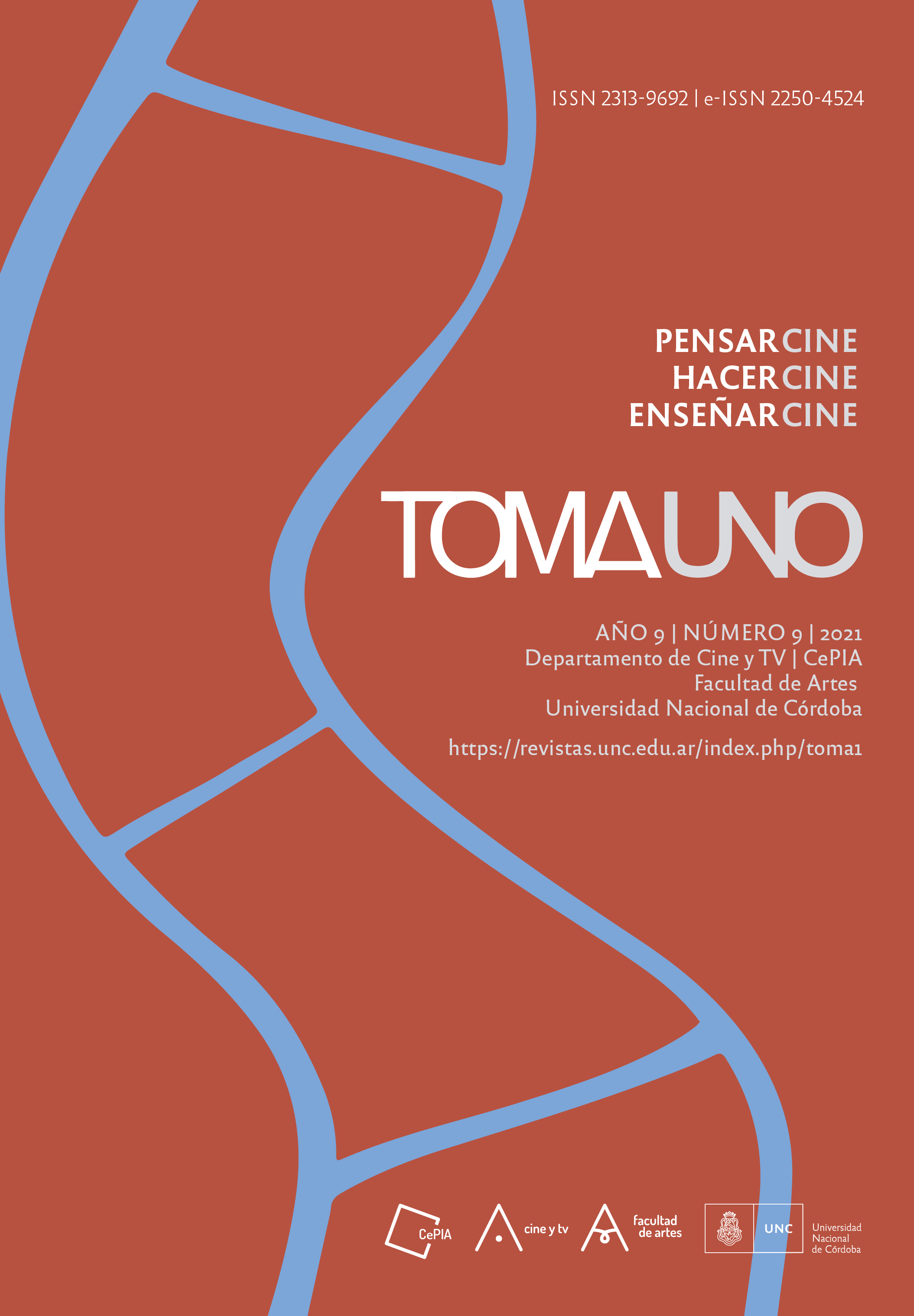Cinema as aesthetics and politicity. Hermeneutical approaches to mexican documentary cinema
DOI:
https://doi.org/10.55442/tomauno.n9.2021.35782Keywords:
cinema, post-cinema, hermeneutics, politicity, documentary cinemaAbstract
In this article, the relationships between cinema and the world, cinema and reality, cinema and truth, will be explored in the light of the “political” act of the medium, in a broad sense that puts political and politicity in tension. These relationships could not be understood without looking at the historical transformations of the cinematographic medium, without its understanding as a complex framework, an assemblage that intersects languages, contexts, practices, sensations. In cinema the visual world and the textual world collide. The imaginary and symbolic possibilities of the moving image enter into a fray with the narrative and diegetic potential of the story told. This is where the politicity acts of cinema occur, which we understand here from a dynamic acceptance, inscribed both in the experience and aesthetic evaluation of making and seeing cinema, as well as in the technological and configurative dimensions of the medium.
To undertake this approach, we turn to the voice of Diego Lizarazo Arias, philosopher, researcher, creator and analyst of image and cinema, in order to recognize and explore contemporary problems around the tensions between cinema and politics. Author, among other works, of La fruición fílmica (2004), Lizarazo undertakes an aesthetic, semiotic and hermeneutical approach to the phenomenon of the “cinematographic possible”, which is explored here through an interview conducted in May 2021, in which we follow the keys to their responses, shared with the confidence of having met as colleagues from the Universidad Autónoma Metropolita (Mexico) in various forums and seminars. Likewise, in light of the dilemmas raised here, we recover some relevant examples from the Mexican documentary to underpin the elements that link cinema and politics in the contemporary context.
Downloads
References
Badiou, A. (2014). El cine como acontecimiento. México: Paradiso Ediciones.
Benjamin, W. (2006). El concepto de crítica de arte en el romanticismo alemán (pp. 13-122). En Obras, Libro I, Vol. 1. Madrid: Abada.
Benjamin, W. (2008). La obra de arte en su época de reproductibilidad técnica (pp. 49-85). Obras, Libro I, Vol. 2. Madrid: Abada.
De Kerckhove, D. (1999). La piel de la cultura. Barcelona: Gedisa.
Deleuze, G. (1984). La imagen movimiento. Estudios sobre cine 1. Barcelona: Paidos.
Foster, H. (2001). El retorno de lo real. La vanguardia a finales de siglo. Madrid: Akal.
Heidegger, M. (1995). Caminos de bosque. La época de la imagen del mundo. Madrid: Alianza.
Hine, C. (2004). Etnografía Virtual. Barcelona: Ed. UOC.
Lizarazo Arias, D. (2004). La fruición fílmica. Estética y semiótica de la interpretación cinematográfica. México: UAM Xochimilco.
Machado, A. (2015). Pre-cine y post-cine en diálogo con los nuevos medios digitales. Buenos Aires: La Marca editora.
Ortiz Leroux, J. G. (2013). Las redes sociales interactivas: tecnologías streaming y urbanización virtual [tesis de grado doctoral, Universidad Autónoma Metropolitana Azcapotzalco]. Recuperado el 2021, 24 de septiembre de http://zaloamati.azc.uam.mx/handle/11191/2363.
Rancière, J. (2012). Las distancias del cine. Buenos Aires: Manantial.
Ranciere, J. (2014). Aisthesis. Escenas del régimen estético del arte. Santander: Shangrila Textos Aparte.
Steyerl, H. (2014). En defensa de la imagen pobre. En H. Steyerl, Los condenados de la pantalla (pp. 33-48). Buenos Aires: Caja Negra.
Huezo, T. (Dir.) (2016). Tempestad [largometraje documental]. México: Cactus Film & Video, Pimienta Films, Terminal.
Isordia, A. (Dir.) (2005). 1973 [largometraje documental]. México: Centro de Capacitación Cinematográfica, Estudios Churubusco. Recuperado el 2021, 24 de septiembre de https://www.youtube.com/watch?v=6FqKv08tZ8A.
López Aretche, Leobardo (Dir.) (1968). El Grito, México 1968 [largometraje documental]. México: Centro Universitario de Cinematografía.
Lumière, A. y L. (Dirs.) (1895). L'arrivée d'un train à La Ciotat [cortometraje]. Francia: Hermanos Lumière.
Mendoza, Carlos (Dir.) (1988). Crónica de un fraude [largometraje documental]. México: Canal 6 de Julio.
Ripstein, Arturo (Dir.) (1970) Lecumberri, el palacio negro. [largometraje]. México: Centro de Producción de Cortometraje. Estudios Churubusco S.A.
Downloads
Published
Issue
Section
License
LicenseThis work is licensed under Creative Commons Attribution-NonCommercial-NoDerivs 2.5 Argentina .


































